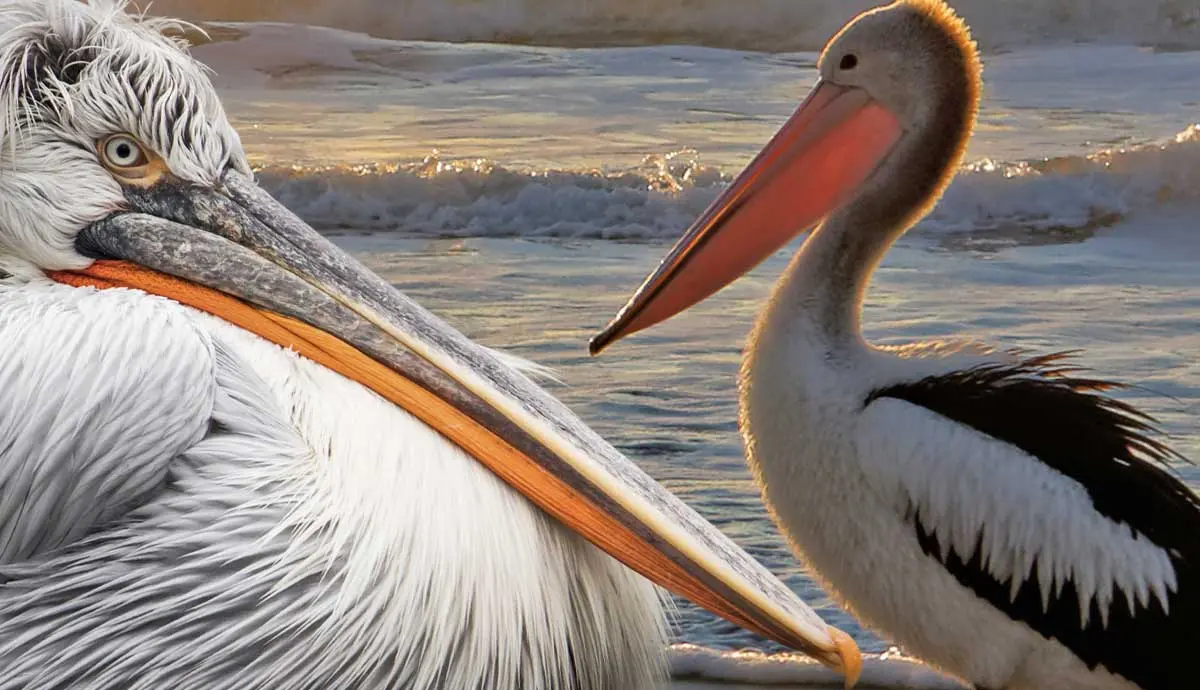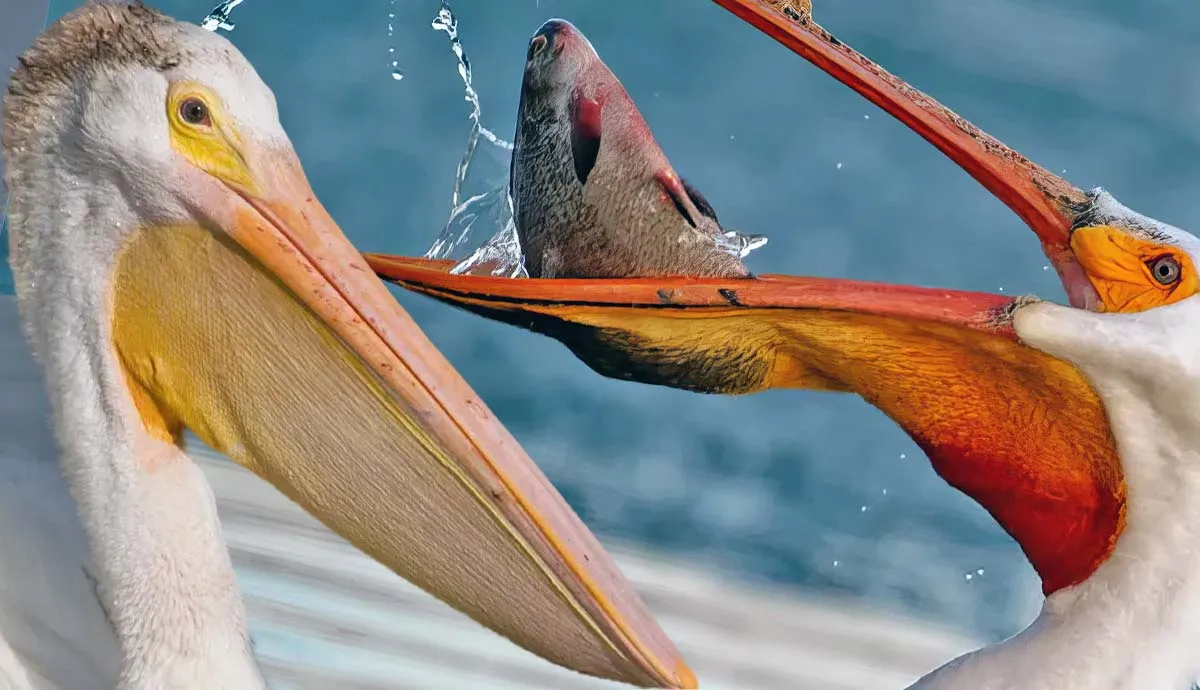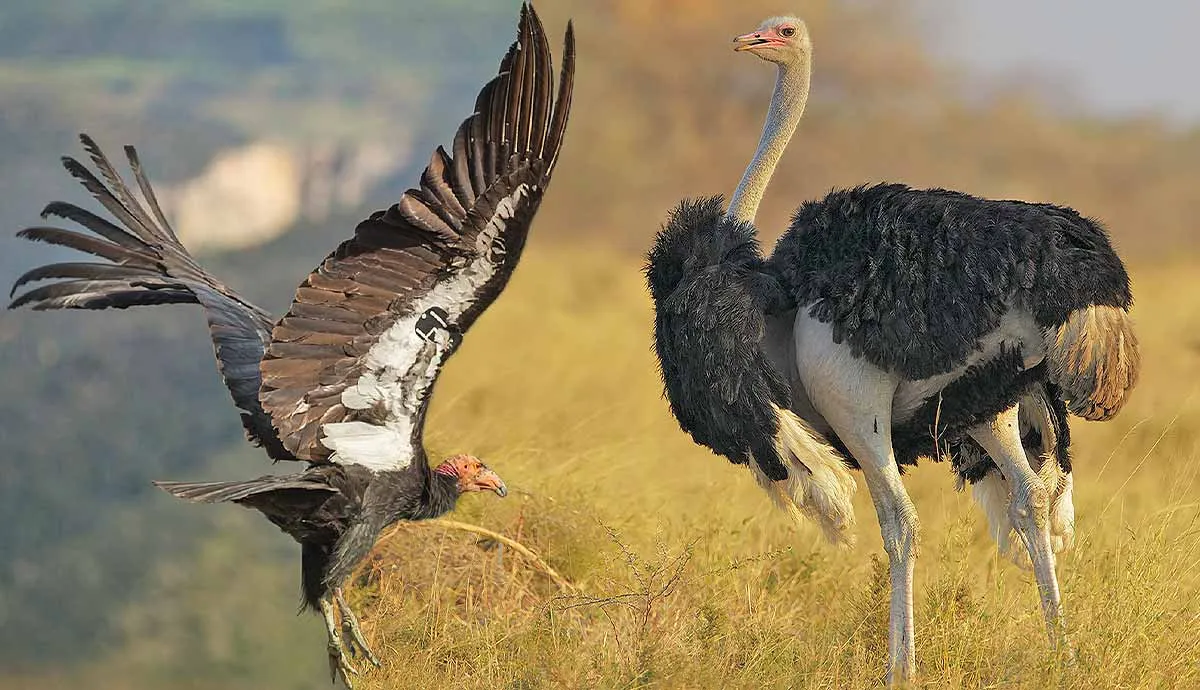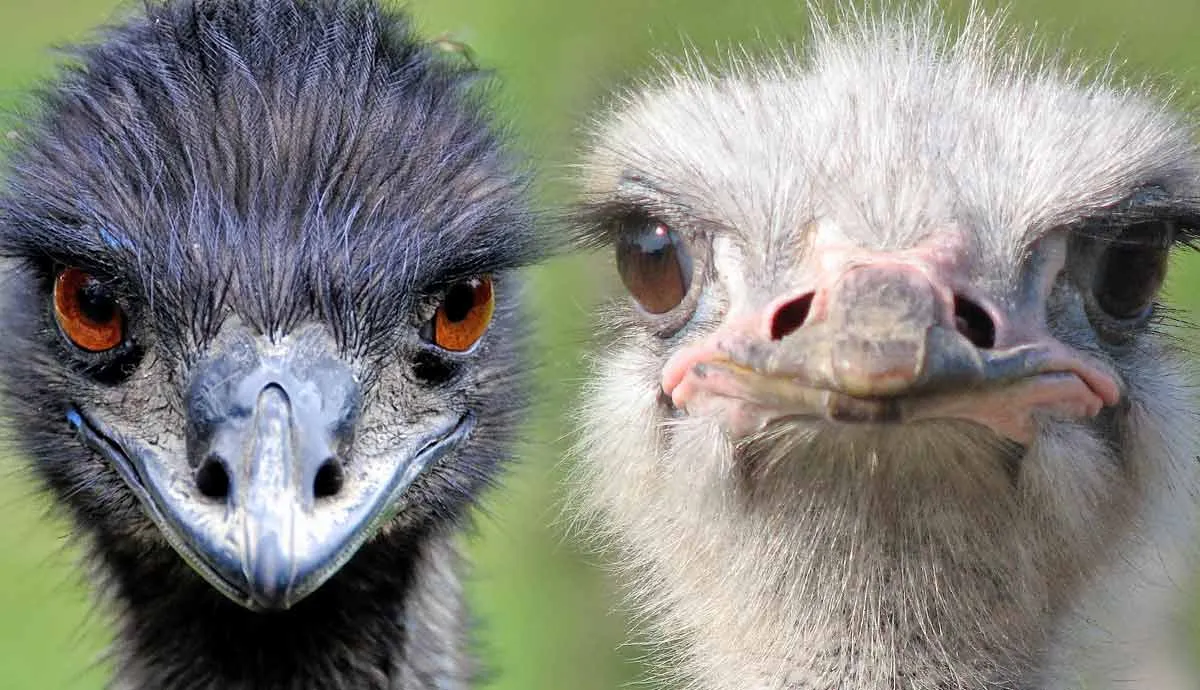With their massive wingspans, large beaks, long necks, and incredibly unsettling throat pouches, everyone recognizes the pelican. You may know them thanks to movies like Finding Nemo and Nim’s Island. Or, you may know them because you’ve had to chase them off a fishing pier.
Either way, pelicans are well-known birds around the world, but for such a popular bird, there’s a surprising amount that people don’t know about them. With that being said, here are 12 things you didn’t know about pelicans.
1. There Are Eight Different Species of Pelican

When you think of a pelican, what’s the first to come to mind? For most people, more often than not, it’s the great white pelican. But did you know that there are eight species of pelican?
These include:
- Spot-billed pelicans
- Dalmatian pelican (which is the rarest and largest member of the pelican family AND one of the biggest birds in the world in general)
- Pink-backed pelicans
- Australian pelicans
- Peruvian pelicans
- Brown pelicans
- American white pelicans
- Great white pelicans
The eight pelican species are informally divided into two groups: ground-nesters and non-ground nesters. The latter birds prefer to lay their eggs in trees and (in the Peruvian pelican’s case) on sea rocks. The major differences between the different pelican species are their size, bill color, wingspan, plumage color, and preferred diet.
2. Pelicans Eat More Than Just Fish
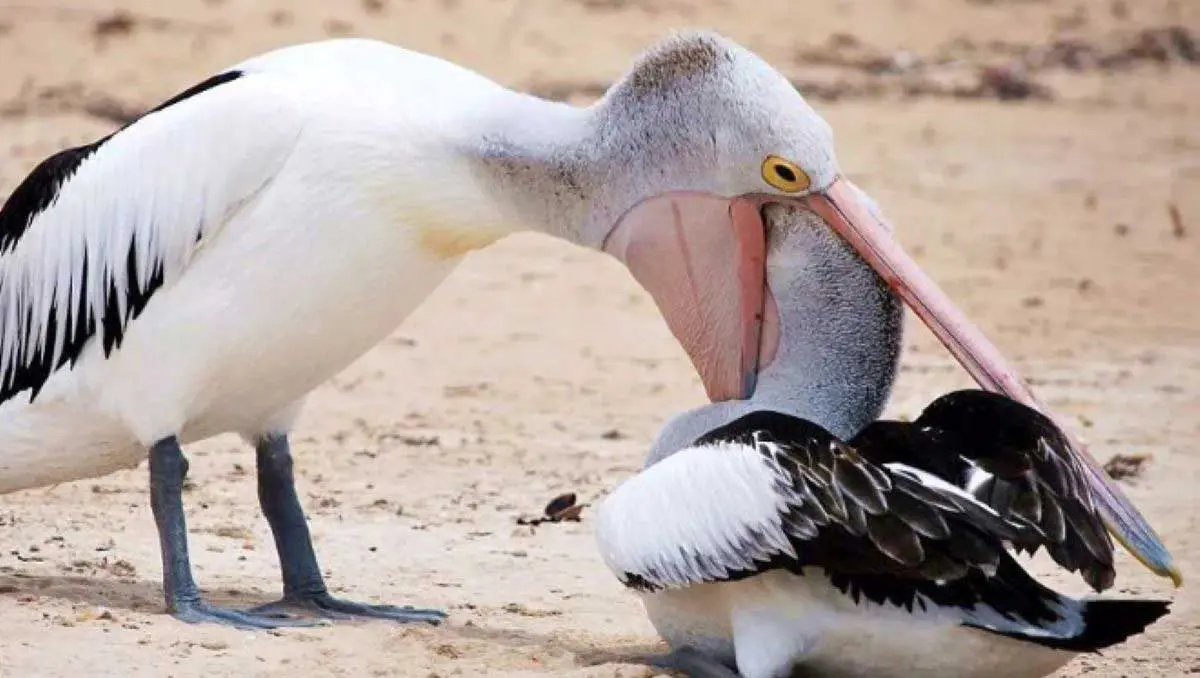
Did you think pelicans just stuff their beaks full of fish and call it a day? You’re not alone. Most people assume that pelicans eat fish exclusively. While it’s true that fish make up a large portion of their diet (think 90%), pelicans are opportunistic carnivores that will eat just about anything they can get their beaks on.
So, what do pelicans eat? On top of the staggering four pounds of fish per day, some will also eat other animals. Crabs, crayfish, turtles, frogs, tadpoles, and lizards can all end up as pelican food.
If fish is in short supply, pelicans adapt. Often, pelicans will resort to eating other birds, like ducklings, seagulls, and pigeons. The Australian pelican often eats the all-important carrion. In other words, if it can fit down their throat, it will end up in their tummy.
3. Pelicans Live on Every Continent Except Antarctica

Where there’s a will, there’s a way, and where there’s a water source, there’s a pelican. Ok, that’s a slight exaggeration. Pelicans live near water (salt, fresh, or brackish), and they’re found alongside coastlines, rivers, lakes, lagoons, and swamps. They’re not one of the animals that live in Antarctica, but otherwise, the pelican is found on every continent.
Though they live on every continent, there are certain areas that pelicans tend to avoid. For example, you won’t find pelicans in the middle of the Amazon rainforest or too far out at sea. You also wouldn’t bump into a pelican at the North or South Poles. Yet, after periods of rain, you could come across them in the desert.
4. Brown and Peruvian Pelicans Are Expert Divers
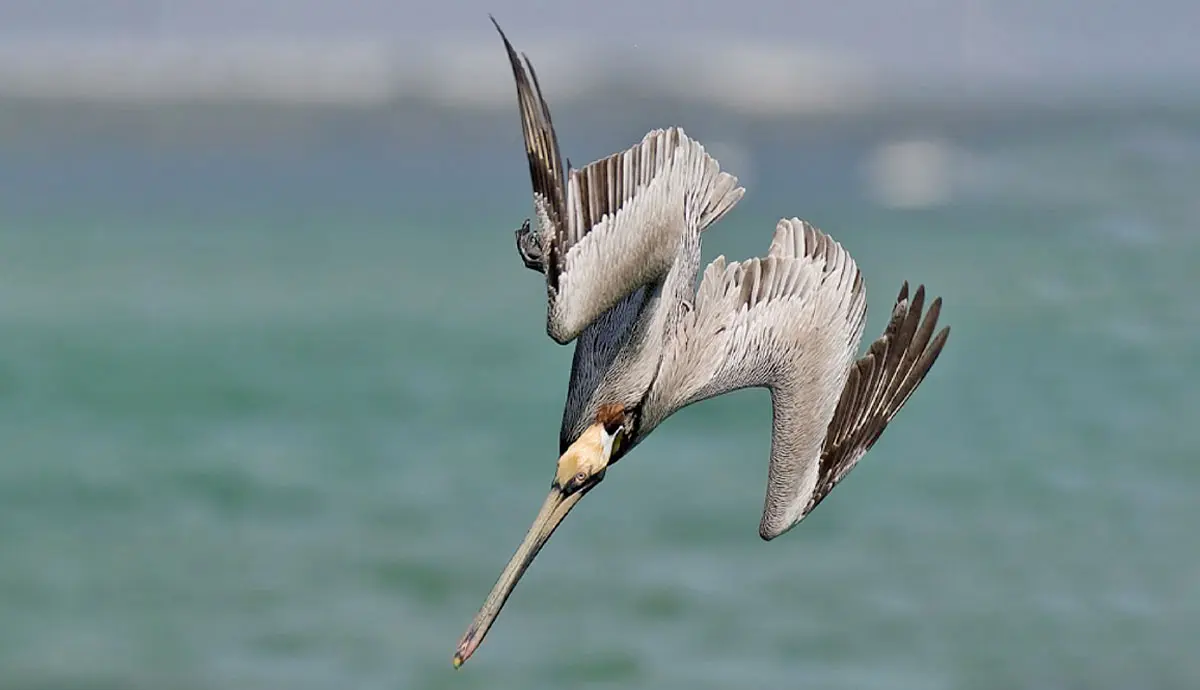
Most pelicans have a simple way of hunting; they hang around the shoreline and shallows until they spot a snack. Then, they use their large pouches to scoop their meals up. But this is not the case for two special species: the brown pelican and the Peruvian pelican.
These pelicans have a slightly more exciting and much more impressive method of hunting: diving! Brown pelicans fly up to 60 feet in the air, looking for their meal. Once they’ve spotted it, they dive head-first into the water and use their pouches to scoop up and gulp down their prey. Peruvian pelicans do the same, but they dive from a lower height.
5. Pelicans Are Seasonally Monogamous
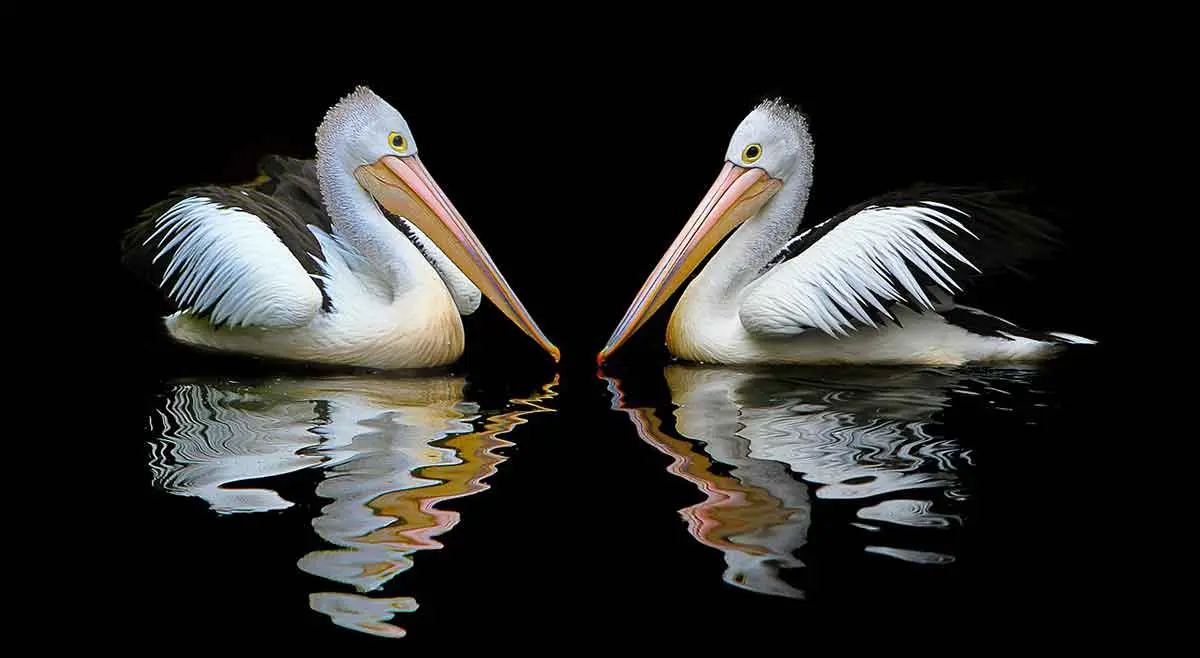
Pelicans don’t mate for life like Emperor penguins, desert grass spiders, hornbills, and other monogamous animals. Instead, pelicans are seasonally monogamous. This means that a pair of pelicans will bond and become mates, but only for a single breeding season. Once the baby pelicans no longer need their care, the bonded pair splits and will choose new mates in the next breeding season.
Two pelicans will pair up and spend three to 10 days mating (not consecutively, of course). Male pelicans gather nesting materials, and the female uses them to build the nest. The female will lay one to six eggs, and the mates will take turns incubating them for 30 to 36 days. In addition, the pair share the responsibility of feeding and caring for their babies. The happy family calls it quits when their young reaches 10 to 12 weeks of age.
6. Small Pelicans Throw Big Tantrums

Human toddlers are known to throw tantrums when they are upset or hungry–– and this is something they have in common with young pelicans. The strange show that a freshly fed baby pelican puts on is a sight to behold. Perhaps the strangest part of this peculiar pelican pantomime is that it doesn’t even happen before the chick is fed, but after.
After being fed by its parents, the pelican chick is known to dip down to one leg and drag itself around in circles, with its wing brushing the ground. It will bang its head on the ground and make incredibly loud noises while doing so. It’s not clear why young pelicans act in this way, but the theory is that it’s a way to draw attention to itself in the hopes that its siblings don’t get fed and become stronger.
7. A Pelican’s Pouch Isn’t a Lunch Box
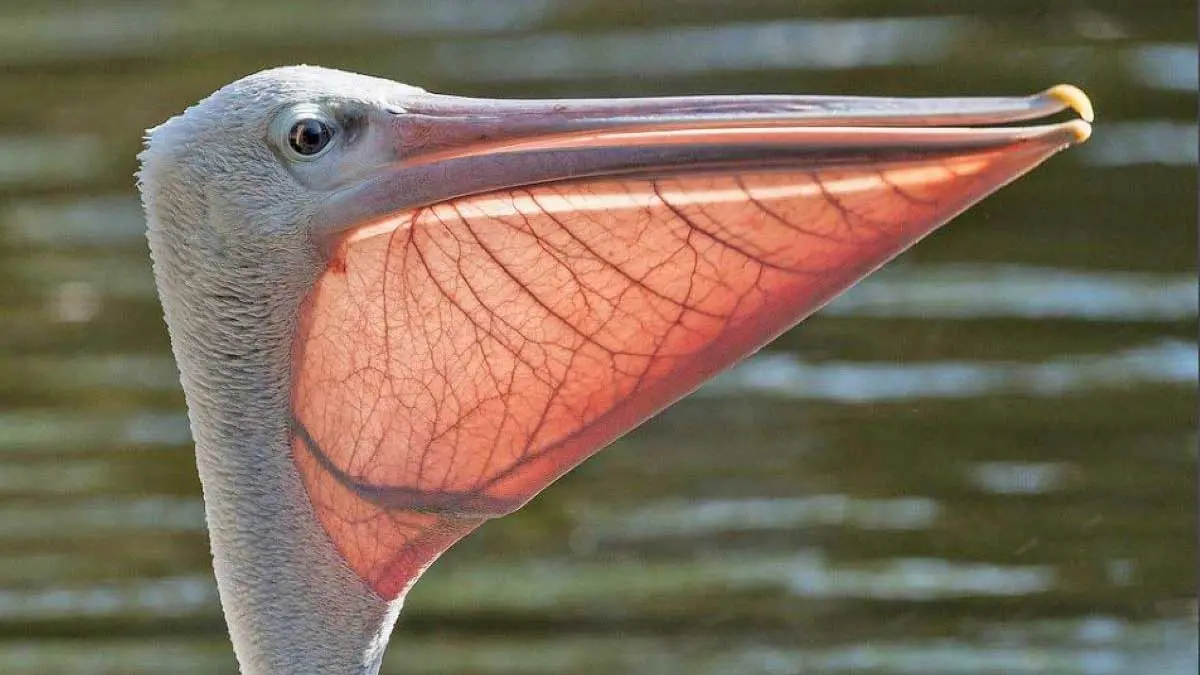
One common misconception about pelicans has to do with their throat pouch. This pouch, which is called a gular pouch, is located underneath the pelican’s beak, and most people believe that it is used as a lunchbox of sorts. But the pelican’s pouch is not used for food storage at all.
The pouch’s main purpose is to scoop up the pelican’s meal – along with a large amount of water. Think of it like a fishing net. The pelican will tilt its head off to the side to drain the water while simultaneously swallowing its meal whole. When there is no water involved, such as when pelicans are chomping down on lizards or small birds, the pouch acts like an inescapable vault.
8. Pelicans Are Eaten by Seven Known Predators
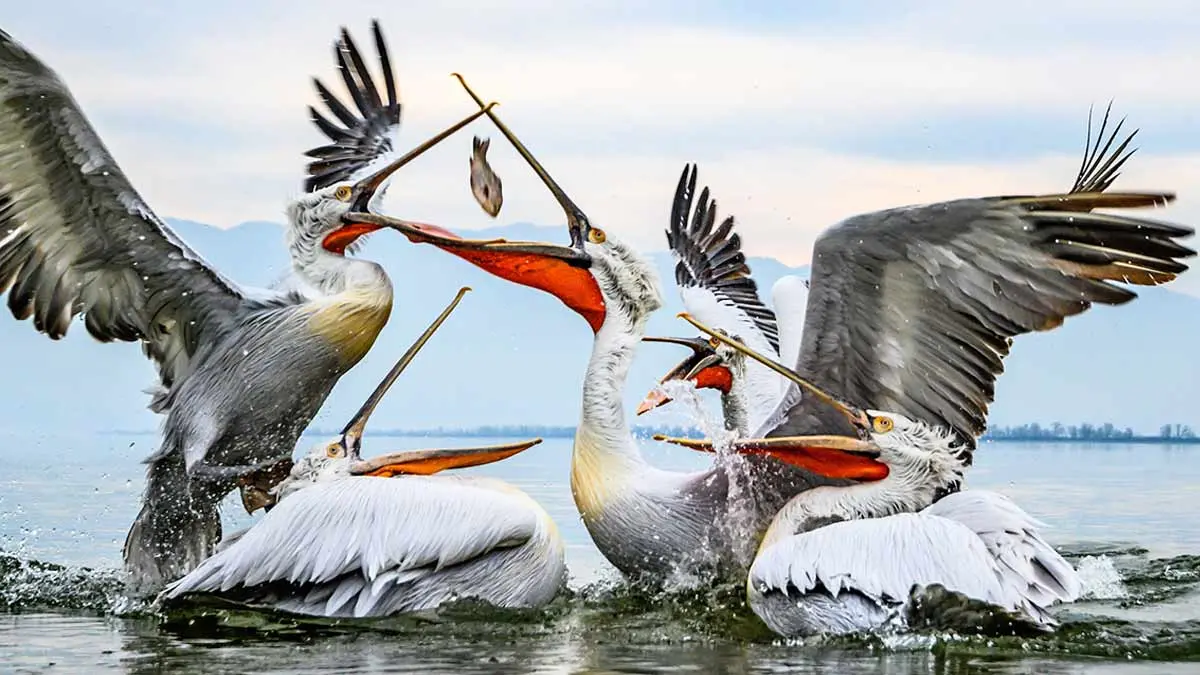
Because of their large size, sharp beaks, and formidable nature, it’s easy to think that pelicans don’t have any predators. Unfortunately for the pelican, it’s not an apex predator, and it’s the main course in many animals’ diets. Pelicans are eaten by sharks (bull sharks and tiger sharks are big fans of pelican meat) while they’re out at sea. Fur seals and sea lions are also known to attack pelicans.
On the shore, a few predators shoot their shot with pelicans. Pelicans are preyed upon by coyotes, crocodiles, falcons, and eagles. Most instances of pelicans being attacked are usually during times of vulnerability, such as during breeding and molting. Pelicans, though they’re not one of the most aggressive animals out there, aren’t exactly pleasant to be around. If you’ve ever been around pelicans, you’ll know that they don’t come across as an easy meal.
9. Pelicans Can Live for Decades

Pelicans have a typical lifespan of 10 to 25 years in the wild, though this age range varies slightly depending on the specific species. The oldest known wild pelican reached the ripe old age of 43 years. Pelicans will live longer in captivity, usually hitting their 34th birthday. The oldest known pelican in captivity lived to a staggering 54 years!
Though pelicans should happily live until their twenties, this is often not the case. Factors that threaten and shorten the lives of pelicans include predation, overfishing, habitat loss, and pollution. But the biggest threat to pelicans? Humans.
10. Some Pelicans Grow Horns in Breeding Season
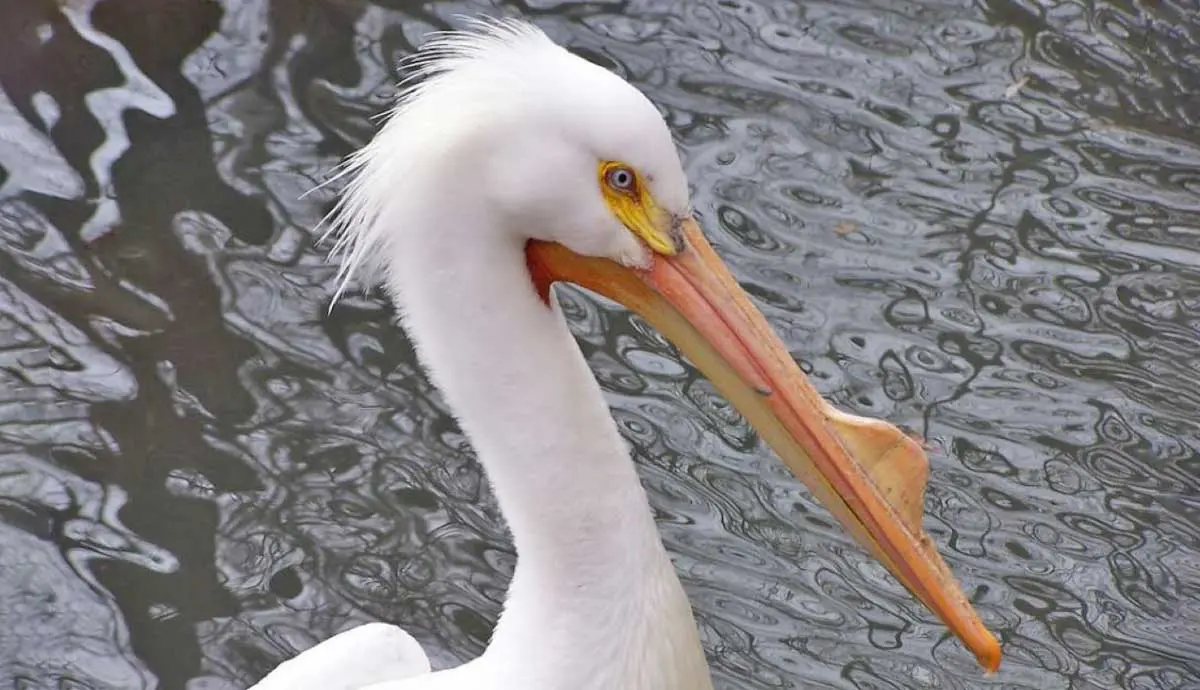
Part of what makes the American white pelican such an interesting bird is that it does something very strange to prepare for the breeding season: it grows a horn! This horn is wide and relatively flat, appears on the upper bill of both male and female American white pelicans, and is yellow or orange.
When the horn has done its job, and the eggs have been laid, the pelican will shed its horn. The horn grows back just in time for the next mating season, and the process is repeated year after year. The American white pelican is the only pelican species to do this.
11. Pelicans Have Spiritual Significance to Christians

Animals and spirituality often go hand-in-hand. It’s easy to see why powerful animals like elephants, eagles, cats, and wolves are regarded as deeply spiritual by several cultures and religions. When it comes to Christianity in particular, people typically associate animals like lambs, doves, snakes, and pigs (for better or worse) with the religion. Who would have thought that pelicans were symbolic to Christians? That’s right, these birds apparently represent self-sacrifice and love.
In ancient times, it was believed that pelican mothers used their beaks to pierce into their sides and feed their offspring blood in times when food was scarce. This is not true, and baby pelicans aren’t actually vampiric creatures, but the legend stuck -- and spread. As a result, you’ll find five mentions of pelicans in the Bible.
12. Kleptoparasitism Is Normal to Pelicans
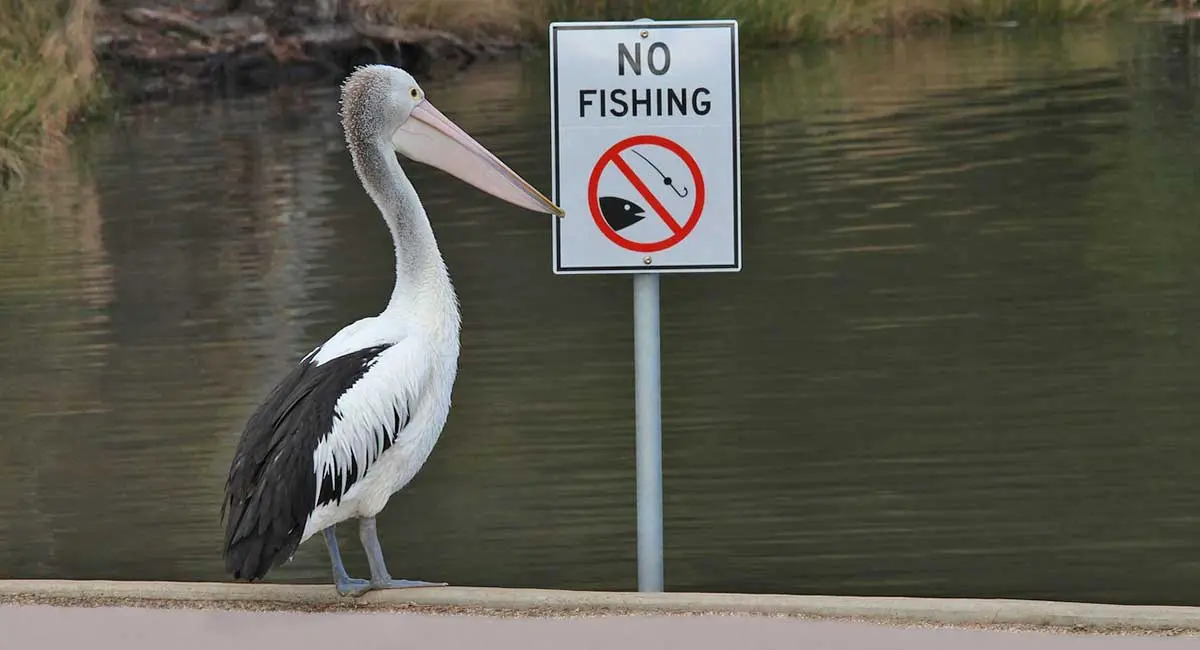
In the human world, kleptomania is a mental health disorder that causes people to steal from other people and places. This occurs in nature, too. In the animal kingdom, kleptoparasitism is where an animal steals food from another animal, rather than catch its own. Animals that are known to practice this shady hunting strategy range from hyenas to dung beetles. But are pelicans kleptoparasites?
Yep. Pelicans are opportunistic kleptoparasites. They don’t specifically set out to steal food, but sometimes, they have no choice. Australian pelicans are known to practice kleptoparasitism on cormorants on occasion, and the American white pelican even goes as far as to steal fresh catches from other pelicans. Now this doesn’t earn the pelican a top spot on the sneaky animals list, but it doesn’t exactly help its reputation.
